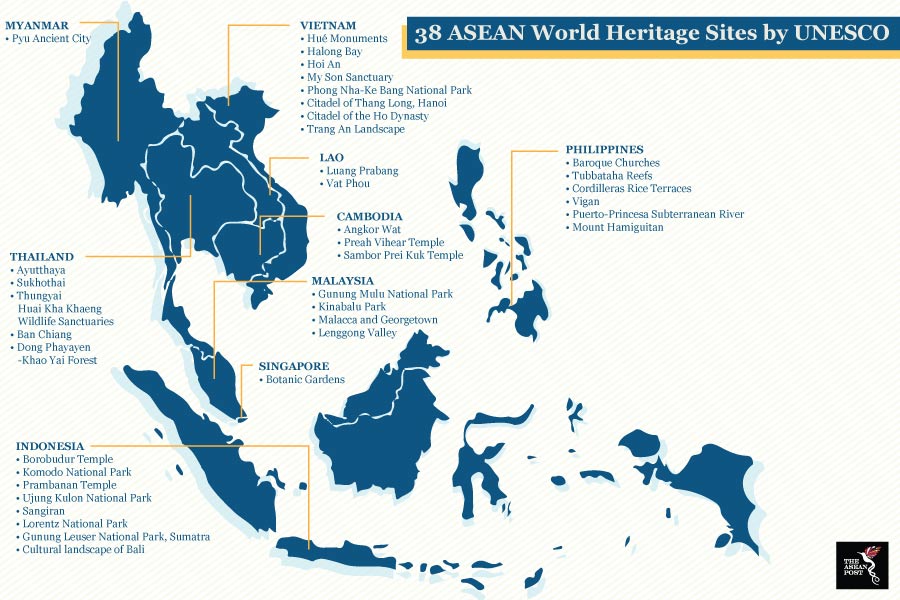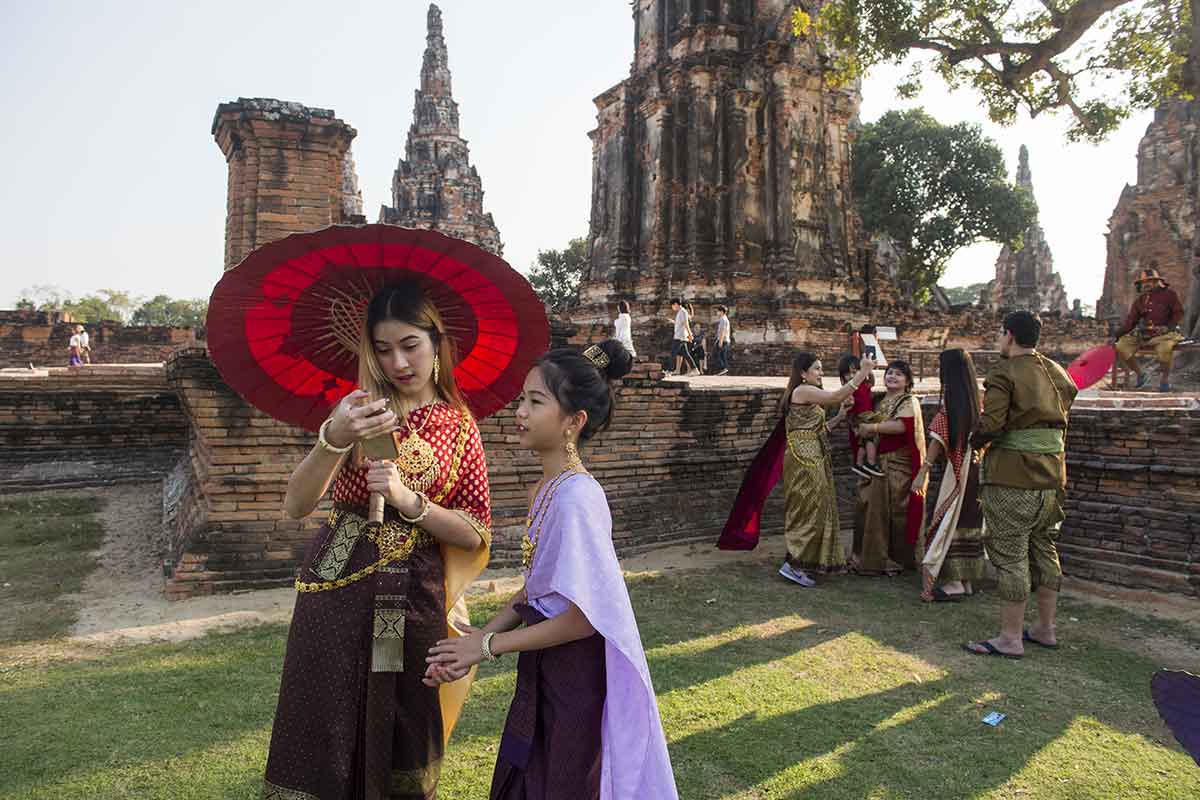Under the theme, “ASEAN: Oneness to the world”, 2019 has been designated as the ASEAN Cultural Year to celebrate and promote the region’s rich and diverse cultural heritage. The promotion of cultural heritage and ethnic traditions drive the region’s tourism development, which is an integral part of the economic policies across ASEAN. Tourists to the region want to experience the diverse cultural and religious heritage, ethnic traditions and colonial architecture.
The United Nations Educational, Scientific and Cultural Organisation (UNESCO) has gazetted 38 heritage sites in Southeast Asia under its list of World Heritage Sites (WHS) for their unique cultural values, historical background and otherworldly landscapes. The list includes temples, historic ruins, terraced rice fields and tropical rainforests, all of which are capable of attracting millions of visitors from around the globe. Famous sites include Thailand’s historic city of Ayutthaya, the large compounds of the Prambanan Temple in Indonesia and Malaysia’s Kinabalu Park. The legacies that are grounded on varied cultural diversity and geographical features are shared among the peoples of the region, while serving as reminders of their ancestral past.
ASEAN nations, particularly Indonesia, Vietnam, the Philippines and Thailand have taken big steps towards obtaining WHS status for their heritage sites. Collectively, these four countries hold 27 out of the 38 WHS in Southeast Asia on UNESCO’s list.

Contribution to GDP
By 2027, the WHS sites are forecasted to contribute US$563 billion to ASEAN’s gross domestic product (GDP), with an annual growth of 5.7 percent. As a result, the travel and tourism sector in the region will play a vital role in helping individual member states grow by creating jobs and enabling integrated regional development. The ASEAN region welcomed more than 129 million visitors in 2018 and according to the ASEAN Tourism Strategic Plan 2016-2025, it is expected to welcome 152 million international tourists by 2025 and 187 million by 2030, respectively.
Responsibility to preserve
ASEAN holds a collective responsibility to preserve and maintain these gazetted heritage sites as they are an avenue for tourism revenue to the region. Climate change is also exacerbating the vulnerability of WHS to many existing risks. Some threats that these sites face include sudden ecological events, pollution and rapid development. Cultural tourism fosters appreciation and understanding of the region’s history, and it is therefore imperative for governments and parties to conserve and preserve the WHS of their respective countries while promoting them for visitors.
Pop culture and Hollywood movies have made some WHS famous which have ramped up the number of tourists. For example, the 2001 fantasy thriller “Lara Croft: Tomb Raider” featured the Ta Prohm temple ruins in Angkor Wat – the capital city of the ancient Khmer empire in Cambodia and the largest religious monument in the world. And similarly, the 2017 film, “Kong Skull Island”, was shot on the banks of Ha Long Bay, in Vietnam, after which there was an increase of nearly seven million tourists who visited the UNESCO site. Each day, hundreds of ships ply the bay, discharging human waste into the sea and fouling the ecosystem. If left unmanaged, the damage inflicted to the site will be irreversible.
Tourism can take a toll on the WHS and sensitive ecosystems, and some countries have taken action by either controlling the flow of visitors or closing off popular destinations to allow for environmental healing. The economies of Southeast Asia rely heavily on tourism; however, little has been done to address the growing threat of tourism.
Luang Prabang in Lao, once considered the best-preserved heritage site, has now been commercialised, since being listed as a UNESCO World Heritage Site in 1995. The historic city has been gentrified, with homes converted into guest houses, restaurants, cafés and bars. Many of the locals no longer live in the area anymore. The increasing number of tourists poses a big challenge because the increasing demand for cultural experiences are transforming authentic traditions into a staged commodity for tourist consumption.
According to analyses compiled in the ASEAN Focus, Dr Ploysri Porananond concludes that the preservation of WHS should be a responsibility shared by the community to “help ensure that local communities in the heritage areas are not adversely and abruptly affected by the surge in tourist interest in their place of habitation.”
UNESCO recommends that governments incorporate regional planning programmes, implement on-site staff and services, and conduct technical conservation research to ensure the protection of their respective state’s cultural and natural heritage.
Related articles:
Singapore bids for UNESCO culture listing
